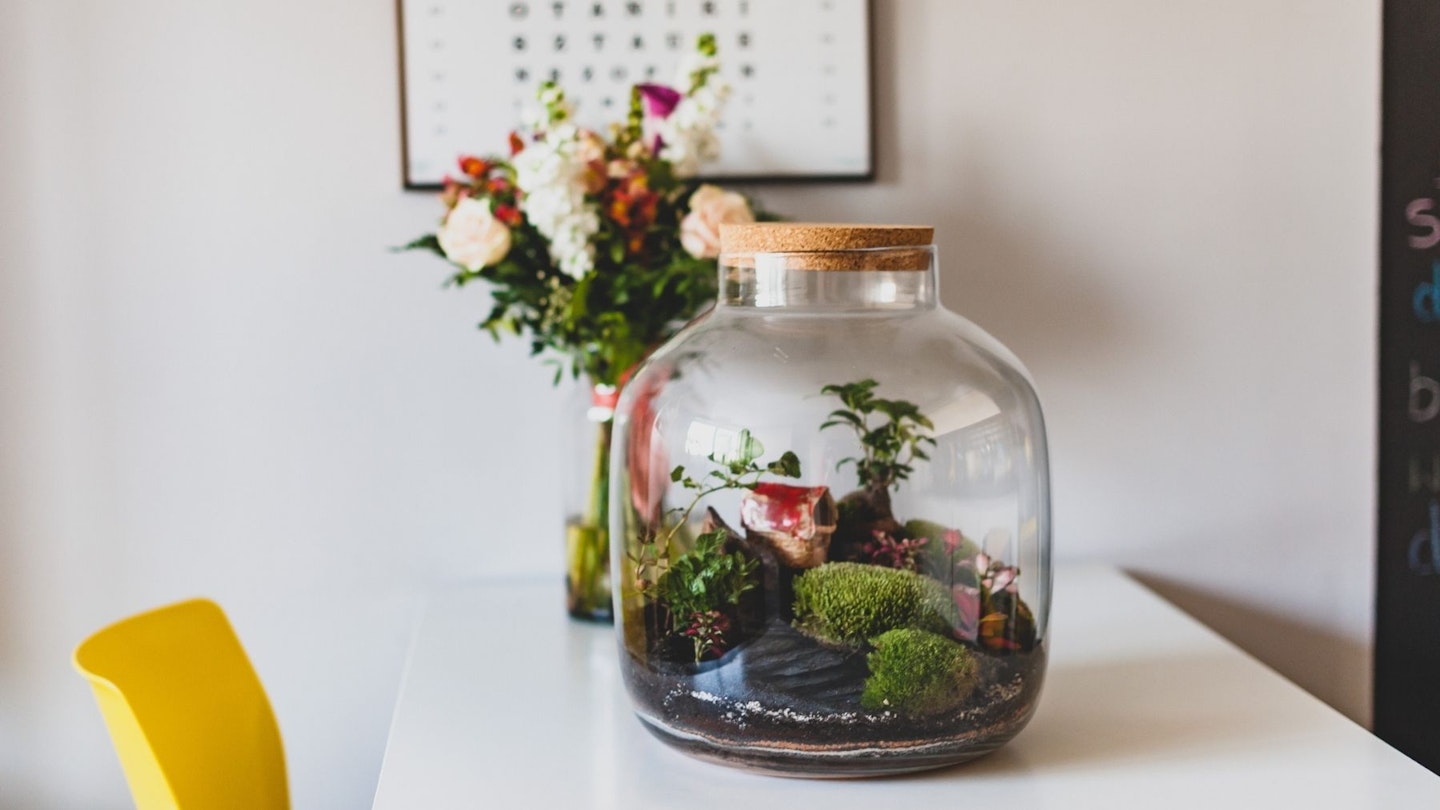If you're looking for a way to elevate your interiors, plants are always the best way to go. Not only can they add some life to your space, but certain types of indoor plants are also great purifiers, removing toxins from your environment. Also, gardening is known to provide stress relief, and can also reduce the risk of stroke.
That being said, if you're low on floor space or simply want a change from the classic cheese plant, then it might be time to consider a terrarium. Terrariums can be placed on tabletops, are low-maintenance and depending on the terrarium plant, can thrive in bright, medium or low-light conditions.
What is a terrarium?
A terrarium is essentially a miniature greenhouse, housing small plants in a sealed or open container. Closed terrariums are self-sufficient ecosystems, and create an incredibly unique environment for plant growth.
How do terrariums work?
Thanks to the transparent walls, closed terrariums allow for both warmth and light to enter, leading to a small scale water cycle. The sun causes moisture to evaporate from the plants, leading to vapour being collected onto the walls, which then drips down into the soil - and there you have it, a mini-ecosystem.
What plans are suitable for terrariums?
When it comes to closed terrariums, moisture-loving plants are the best choice. We're talking ferns, mosses and mini orchids. Open terrariums, on the other hand, require drier environments, the best examples being succulents and air plants
To help you on your journey of building your very own indoor garden, we've listed the best terrarium plants for both closed and open terrariums. Shop our top choices below.
Best open terrarium plants
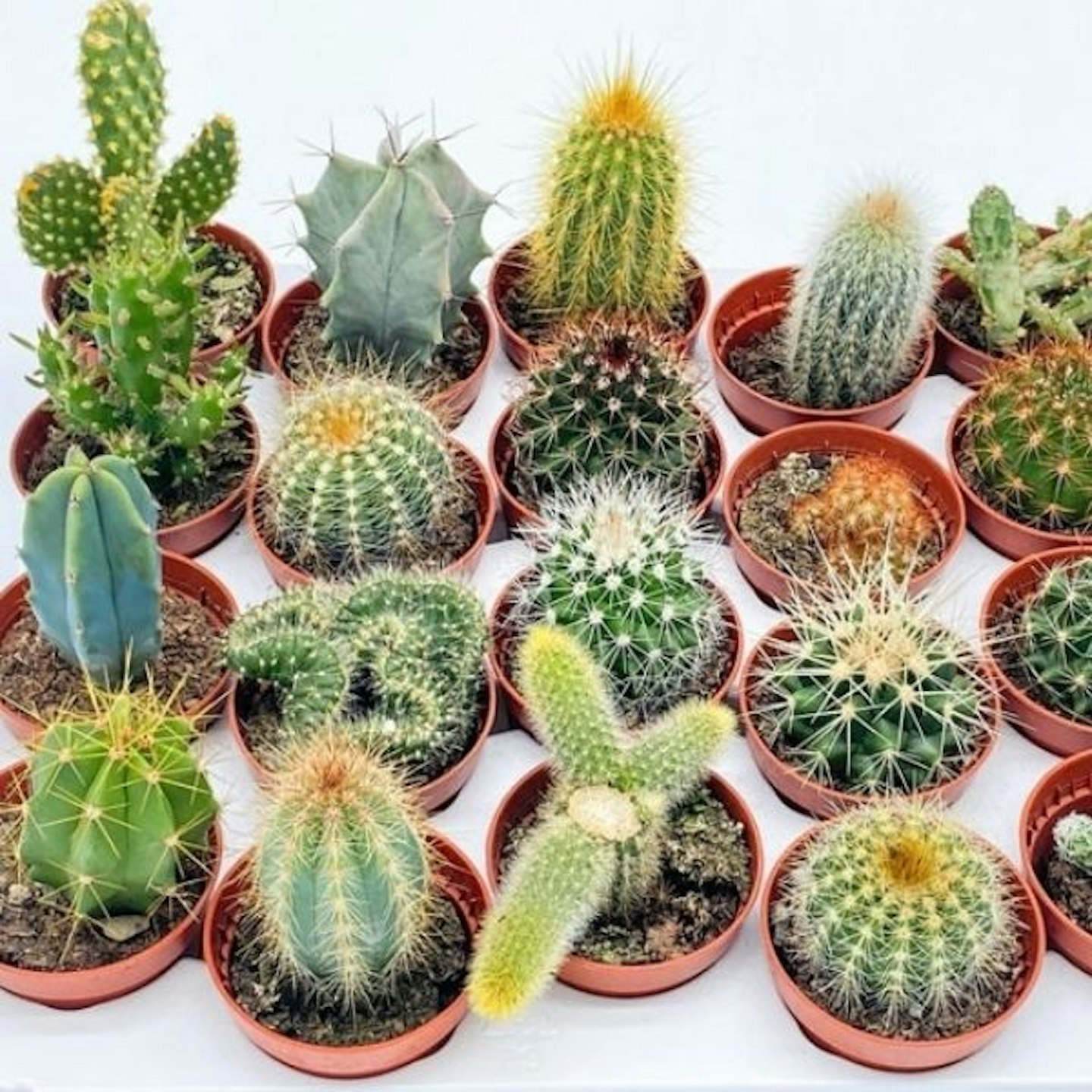 1 of 6
1 of 6Mix of Baby Cacti Plants
This selection of baby cacti will thrive in an open terrarium and are relatively low-maintenance. They'll look extra exotic for your display, and mix well with other terrarium plants.
.jpg?auto=format&w=1440&q=80) 2 of 6
2 of 6Air Plants Tillandsia x3
Thanks to their beautiful green and red hues, these air plants will make for an exceptional open terrarium display. They get all their nutrients through their leaves, meaning they don't require soil, and also have air-purifying qualities.
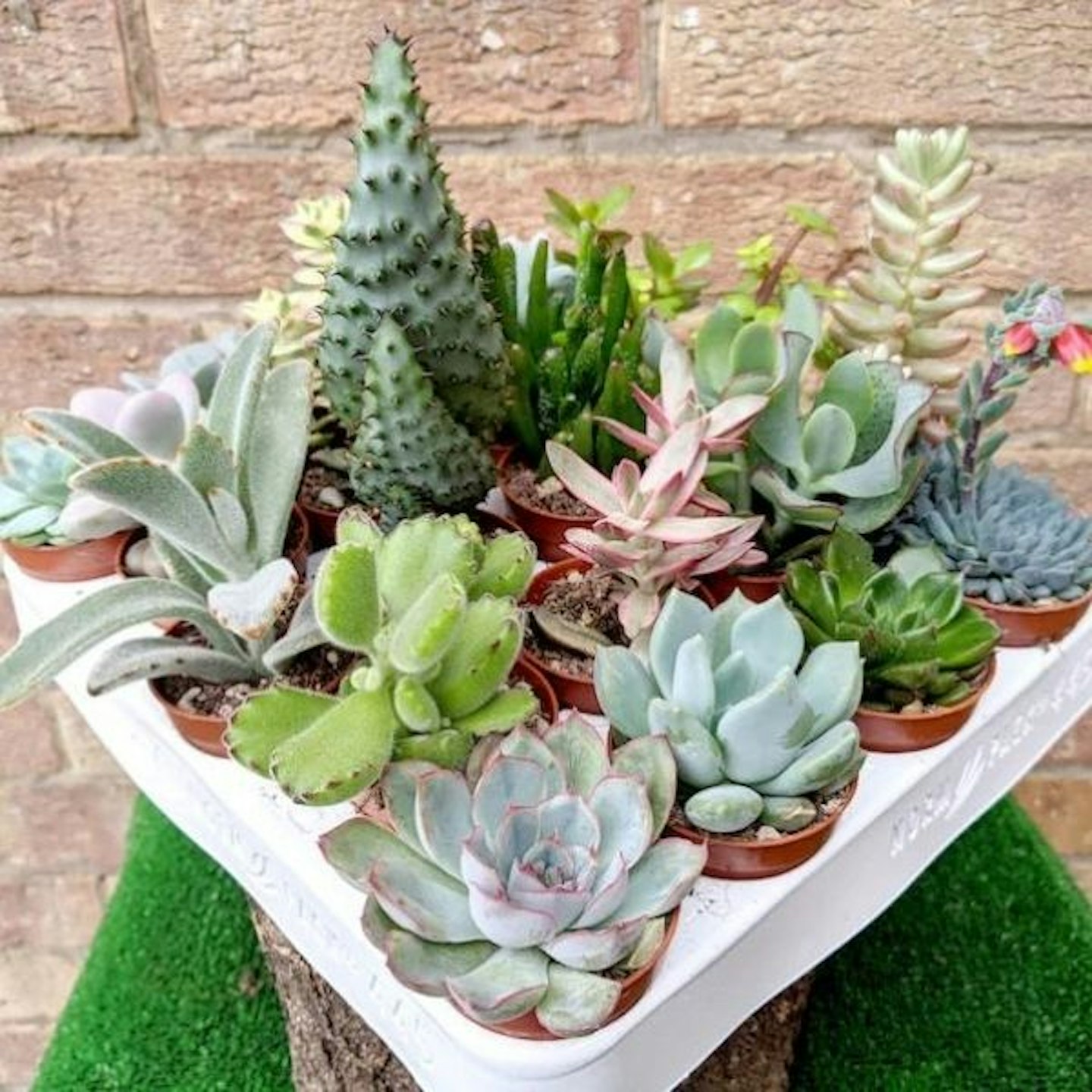 3 of 6
3 of 6Small Succulent Plants
Succulents are both visually appealing and extremely low-maintenance, making them perfect for the lazy gardener or those new to gardening. They thrive in open terrariums and tend to live for years.
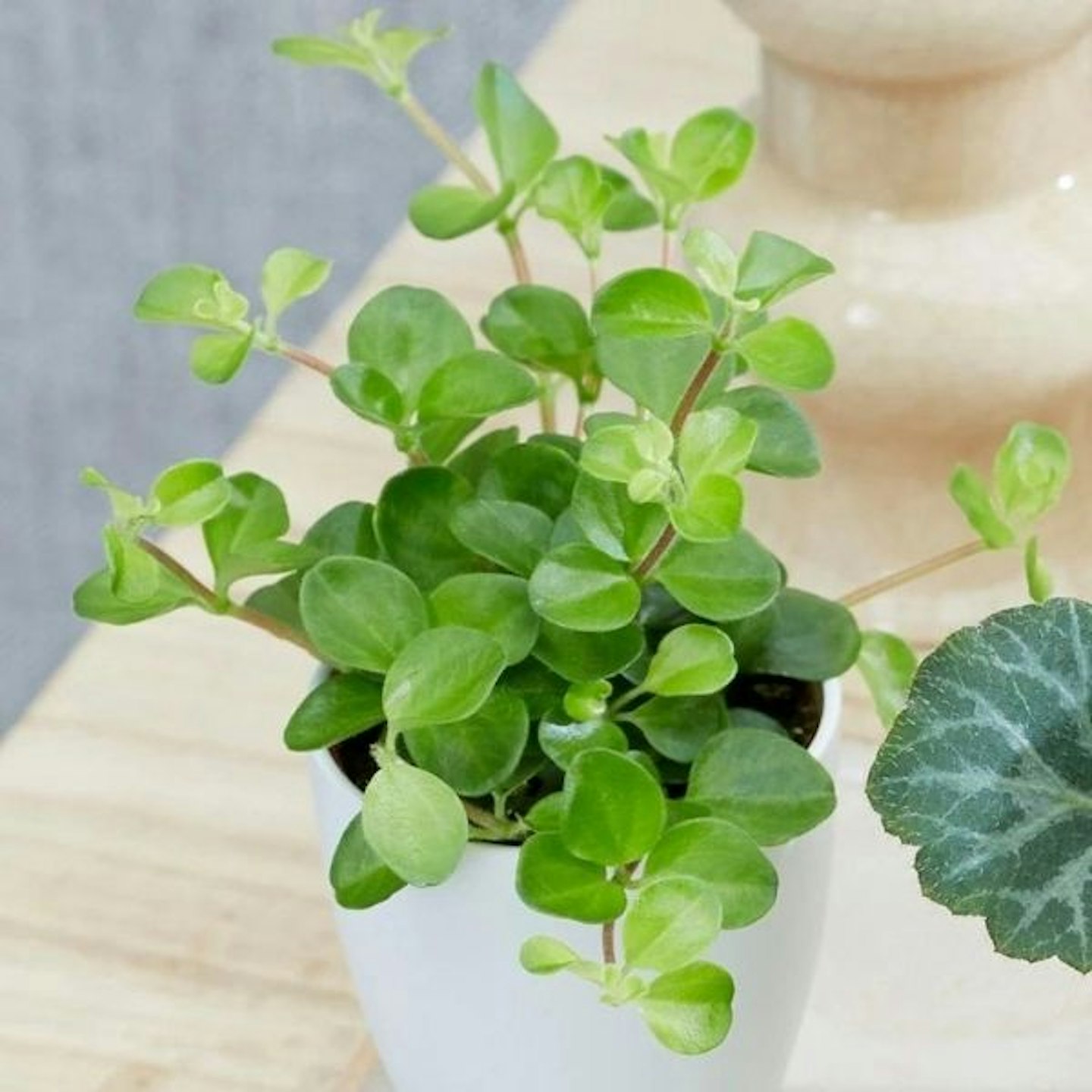 4 of 6
4 of 6Peperomia Plant
The slow-growing nature of peperomia plants, paired with their rounded shape and leathery foliage make them the perfect candidate for your indoor garden.
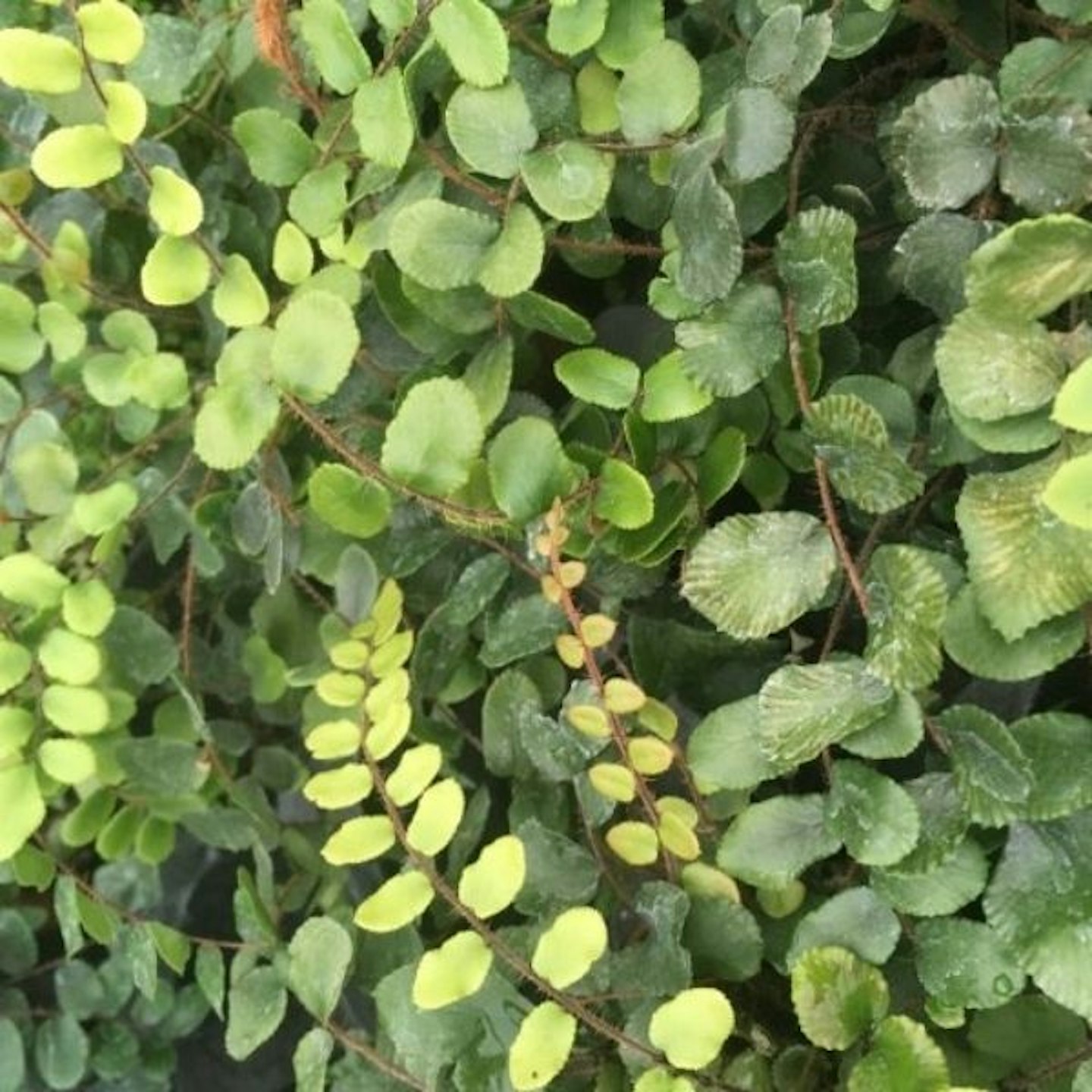 5 of 6
5 of 6Button Fern
Unlike most ferns, the button fern is drought tolerant, which means it'll be a great addition to your open terrarium.
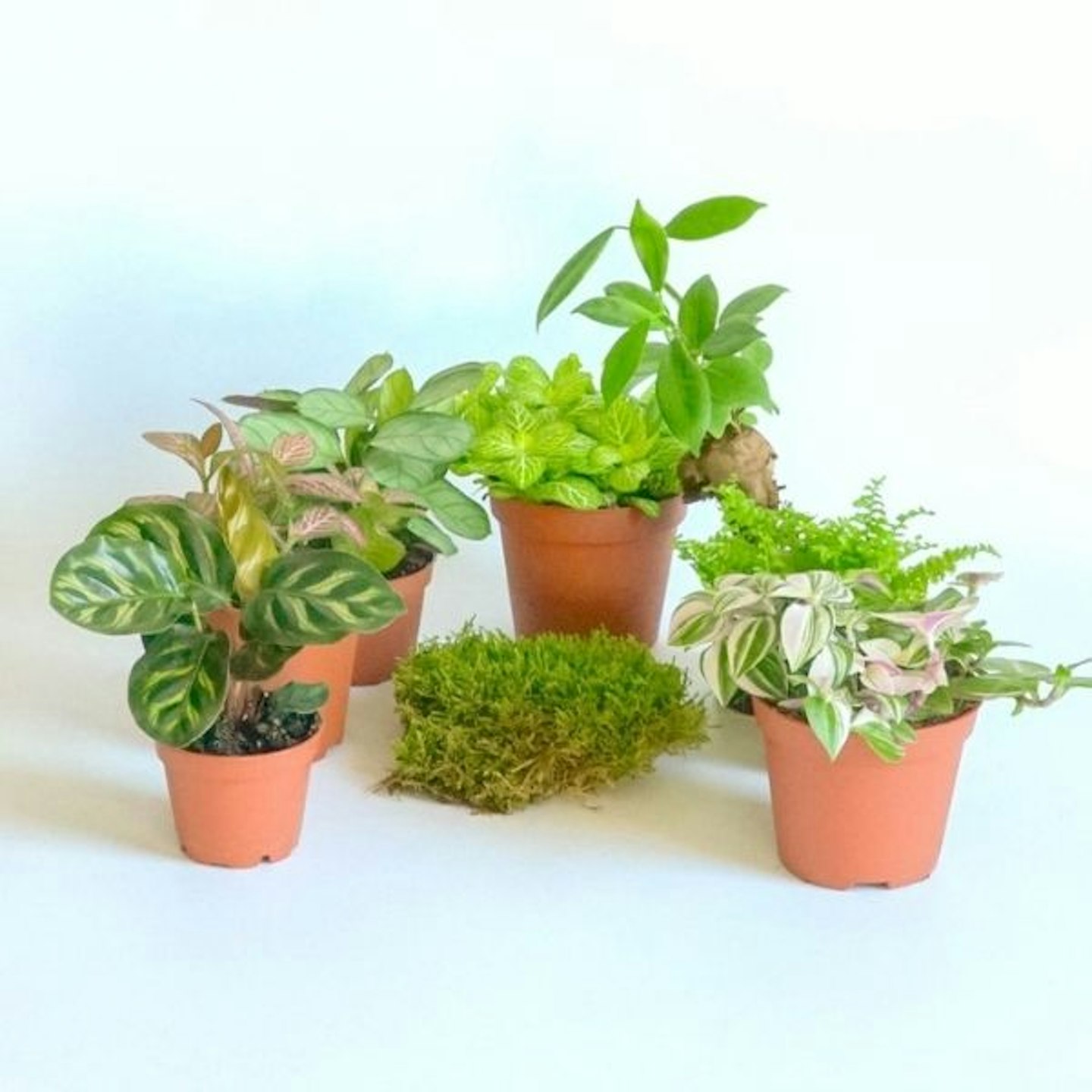 6 of 6
6 of 6Terrarium Plants For Both Open and Closed
A selection suitable for both open and closed terrariums, this set includes pots of Fittonia, fern and asparagus fern. Ideal if you're after a varied display.
Best closed terrarium plants
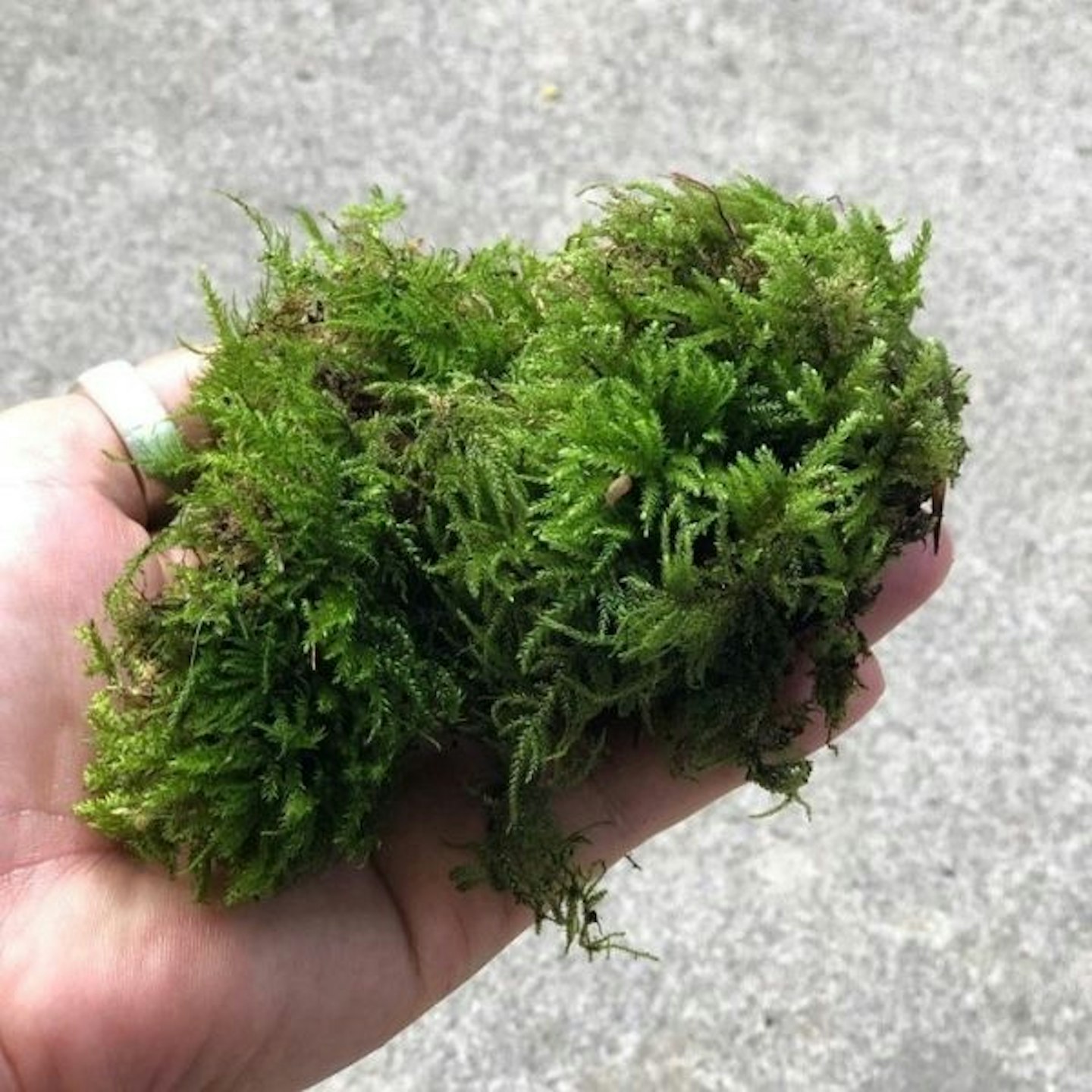 1 of 5
1 of 5Live Moss
When it comes to closed terrariums, moss is a great place to start. It thrives in humid conditions and low light, and its slow-growing nature means it won't take up too much space.
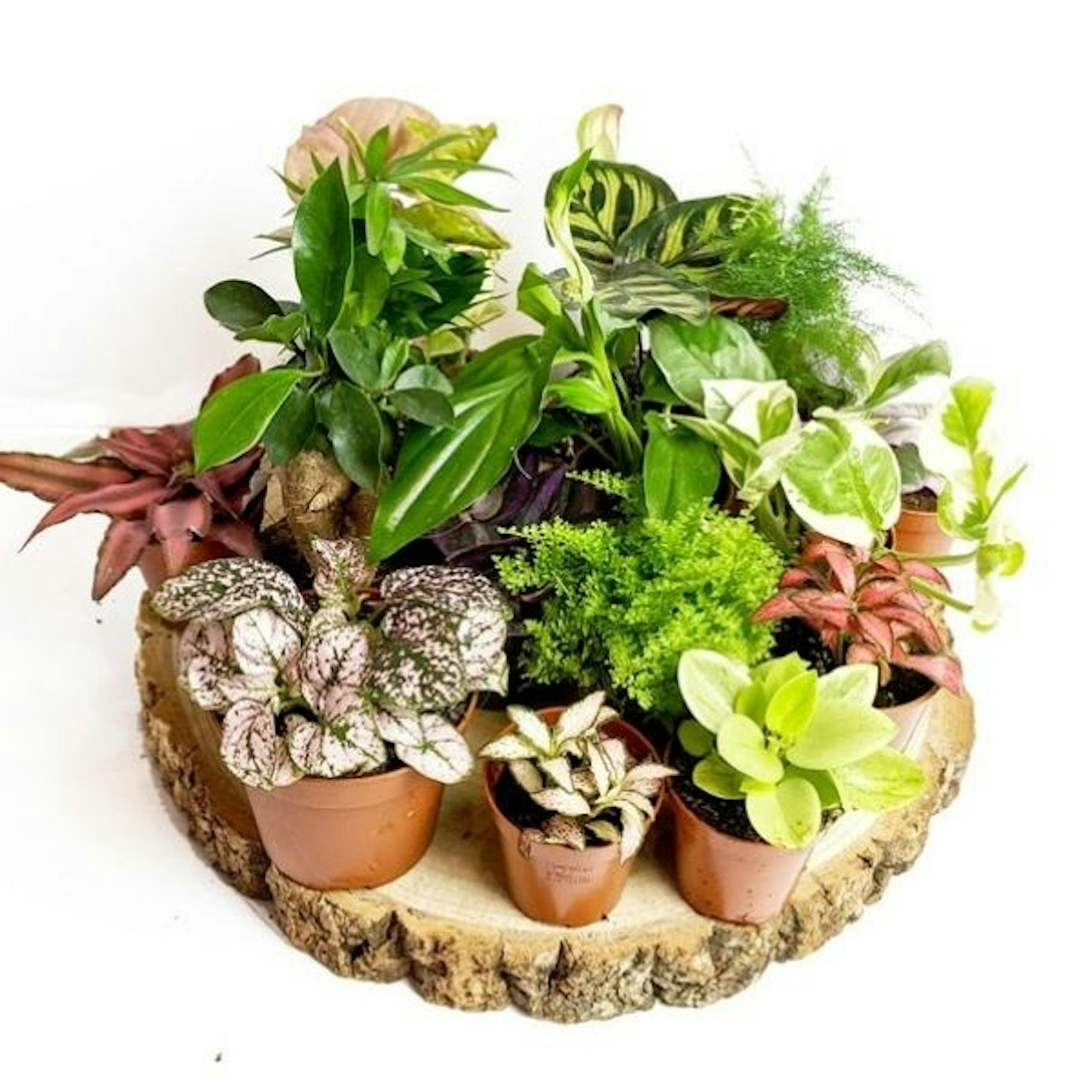 2 of 5
2 of 5Closed Terrarium Plants
From prayer plants to begonias and loads more in between, this seller will send you a selection of plants ideal for closed terrariums. A great option for those just starting out.
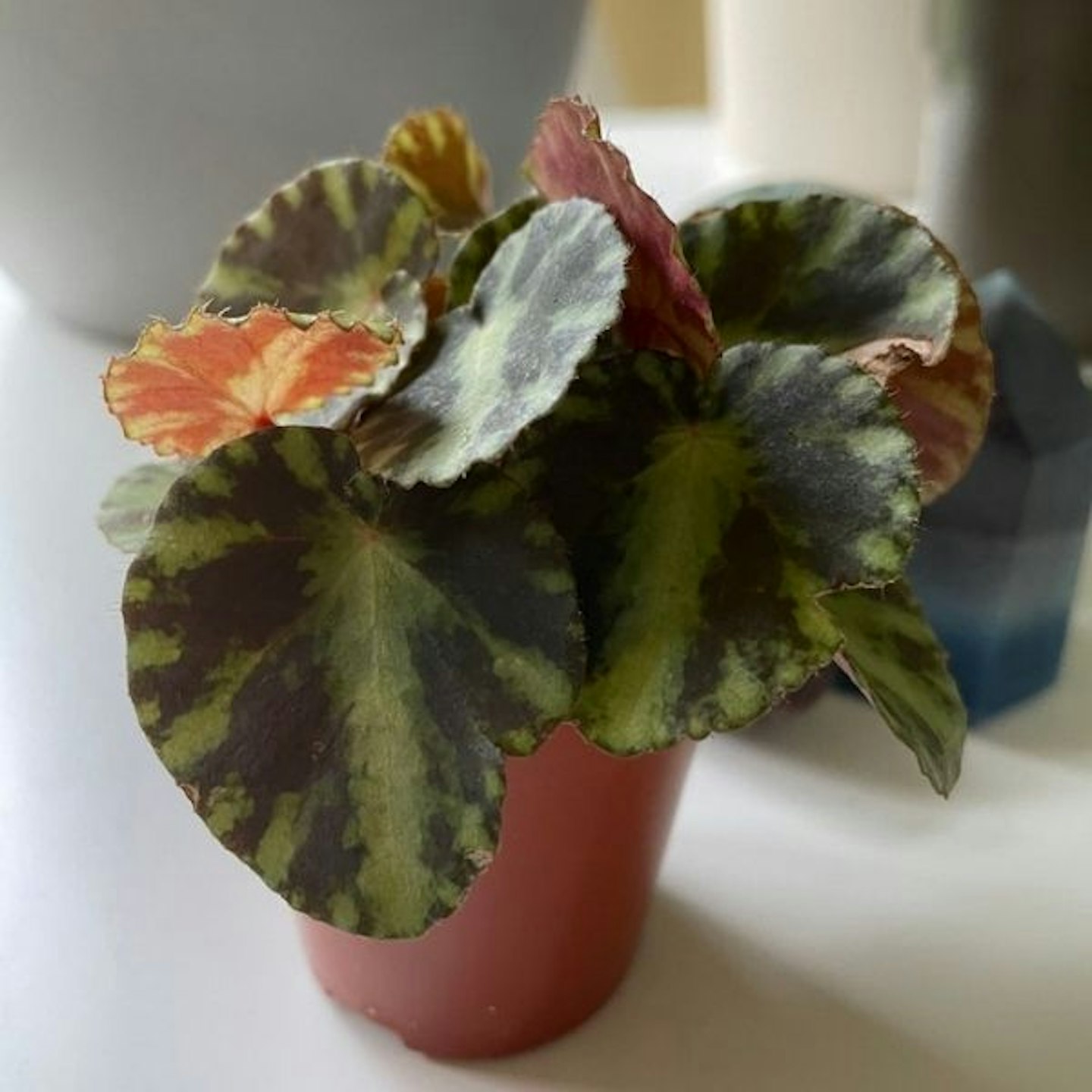 3 of 5
3 of 5Begonia Cleopatrae
Their unusual colours and humid-loving properties make begonias a top choice for close terrariums. Plus, they're super easy to care for, too.
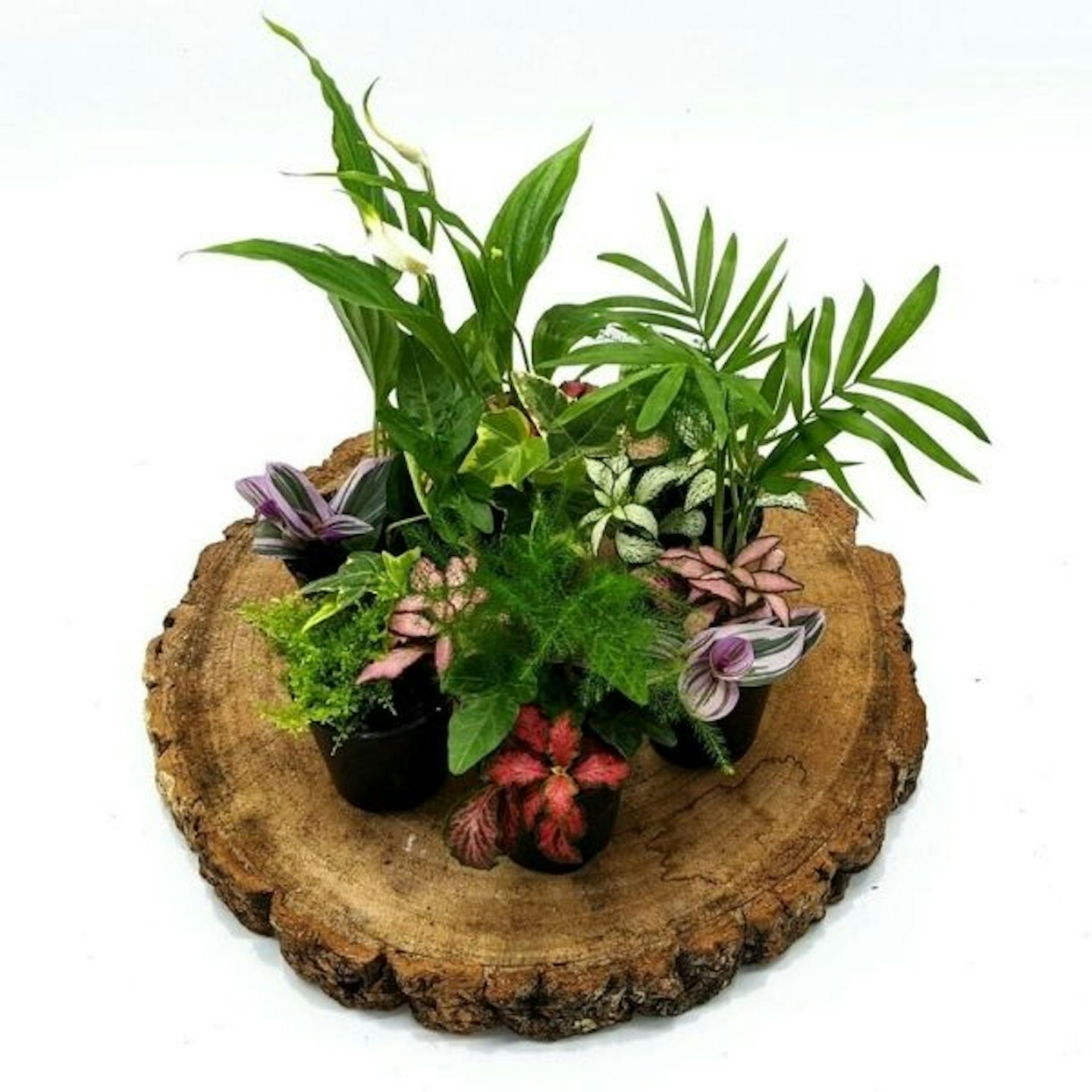 4 of 5
4 of 5Small Mixed Terrarium Plants in 5cm Pot
This selection of moisture-loving plants including the Fittonia, polka dot plants, ferns and ivy will provide you with a varied and incredible visually appealing display, to say the least.
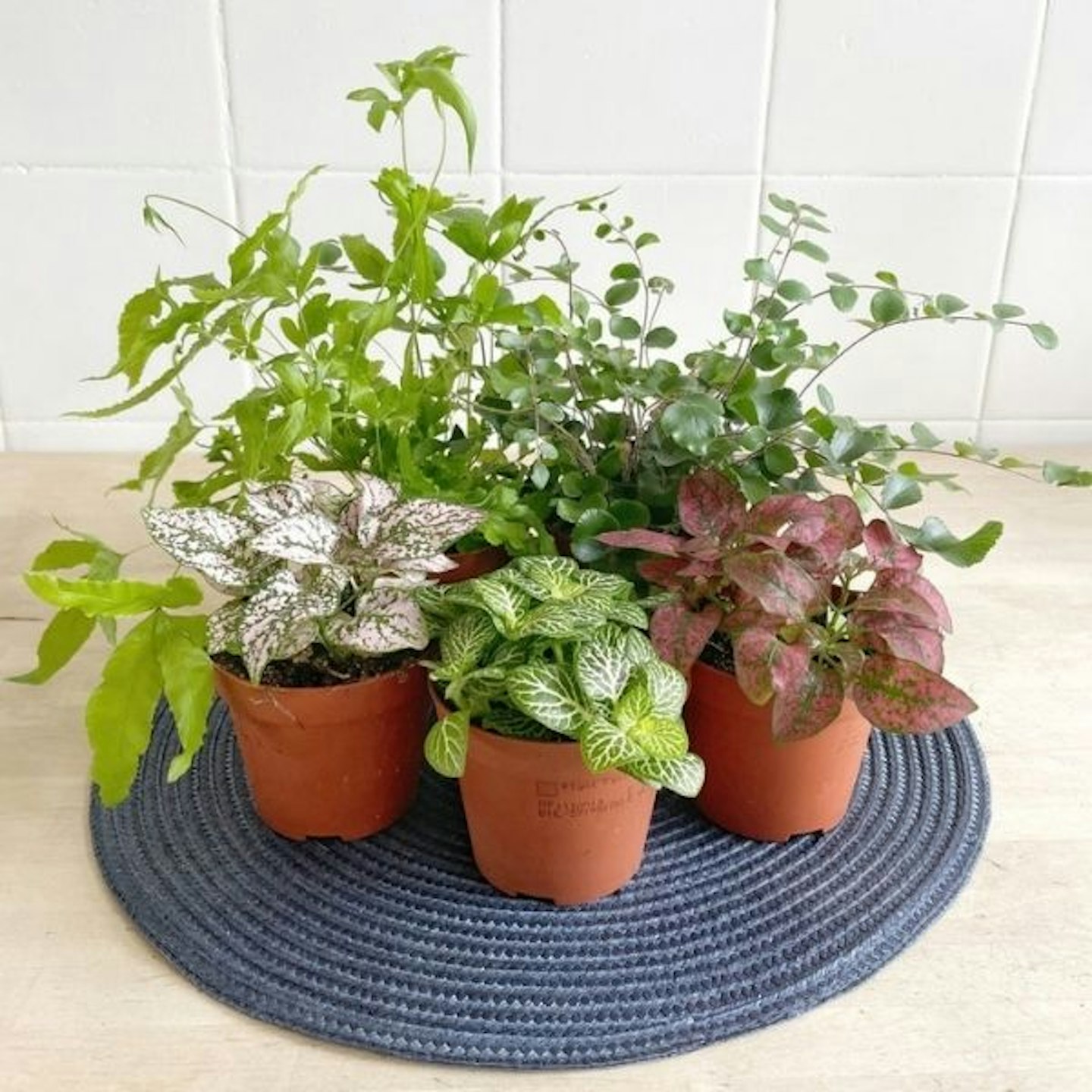 5 of 5
5 of 5Mix of 5 terrarium plants
Another brilliant selection of closed-top terrarium plants, including fern varieties, Fittonias, and Hypoestes in a range of colours. They all come in 8cm plants pots, but exact combos will vary.
How long can a plant live in a terrarium?
Given the right conditions, terrariums can live for years. Factors such as poor lighting, overwatering or poor choice of plants can all lead to a shorter lifespan.
Do you have to water terrariums?
Yes. It's important to remember that although terrariums require less watering than your usual indoor plants, they still need to be watered every so often. We recommend watering once a month to every six weeks, depending on how the soil looks.
Can I make my own terrarium?
If you have a knack for DIY, then we highly recommend getting to work to make your very own terrarium. If you need some help, we love this guide by Kew Gardens which outlines everything you need to build your very own miniature garden.
More popular reads:
The best indoor hydroponics garden for herbs, plants and edible flowers
